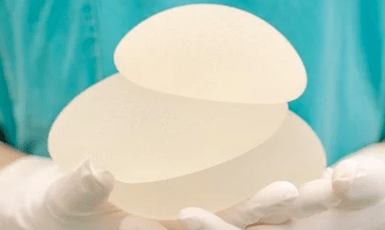
Although breast size seems to be predetermined, there are many factors that can affect breast size.
Fluctuations in your monthly cycle aren't the only reason your breasts grow and shrink, feel sore, or have other strange symptoms.
Many changes are related to hormone levels, but breast size can also be affected by coffee consumption, weight changes, diet and physical activity.
We can say that your breasts can tell you a lot about what is going on in your body and your health.
What factors affect breast size?Let's find out.
1. Genetics
Although genetics is not a death sentence, it certainly plays a large role in breast size.
Breast size is a combination of genetic and environmental factors.Some people have a tendency to have large breasts.In addition, if we gain weight, our breasts also become large.
Genes determine the basic parameters of the breast, but not the actual size.
For example, genetic predisposition affects breast size, volume and shape.But breast size can change throughout life.
This does not mean that just because your mother and sister were a size 3, you will necessarily be the same size.However, the probability is much higher than for a woman who was born into a family where the first breast was predominant.
2. Training
In general, you are unlikely to notice any changes in your breasts, even if you engage in vigorous physical activities like weight lifting.The fact is that the mammary gland is located on top of the pectoral muscle and is not part of it.
Many people believe that the muscles located under the chest can be pumped endlessly and it will not affect its shape and size in any way.
Although the exercises themselves do not enlarge the breasts, exercising the pectoral muscles can create the illusion of larger, firmer breasts.
Push-ups, bench presses, chest flies are the main exercises that strengthen the chest muscles.
- Do 3 sets of 20 pull-ups at the beginning and the same number at the end.Use this complex at least 3 times a week.
- Chest flies are another useful exercise for the chest.Take dumbbells (or water bottles) in your hands, sit on a bench with a slight incline, feet on the floor.Extend your arms to the sides (arms should be slightly bent) at chest level and then bring them back.Do 3 sets of 15 repetitions three times a week.
3. Intimate relationship
The pleasure we experience during intimacy also temporarily increases the size of the breasts.
When we are excited, our heart rate increases, which increases blood flow to various parts of our body, including the chest.This makes the breasts appear fuller and larger, although the effect is short-lived and can vary from barely noticeable to more impressive in women.
In any case, you shouldn't expect much from just physical intimacy.Once you are back on track, your breasts will also return to their normal size.
4. Phytoestrogen products
.png)
Experts say that certain foods can affect a woman's breast size.
During the transition period, the level of the hormone estrogen increases in girls, which causes breast growth.At the end of the transition period, the hormone levels normalize and the breasts are almost the same size throughout life.
Because the hormone estrogen promotes breast growth, products containing estrogen analogs, when taken, may also affect breast size.
Phytoestrogens are plant-derived chemicals that bind to estrogen receptors in cells and act like this hormone.
Phytoestrogens include: tofu, green soybeans, soybeans, sunflower seeds, and flaxseeds.Carrots and beets also contain phytoestrogens, but it is recommended to consume them in moderation, as the side effects of consuming large amounts of foods rich in phytoestrogens are not yet fully understood.
5. Your weight
The mammary glands are composed of supporting tissue, mammary glands, and ducts, and the percentage of each varies among women.
For example, some women have more connective tissue than fat and vice versa.If your breasts contain enough fat, you will notice changes in breast size as you lose or gain weight.
Most likely, the difference will be insignificant if you lose or gain a few kilograms, but it will become more noticeable with large fluctuations in weight.
6. Phases of the menstrual cycle
The menstrual cycle can be roughly divided into two parts: from the first day of menstruation and before ovulation - the follicular phase, and after ovulation - the luteal phase.
.png)
During the follicular phase, namely on the 5th-7th day after the start of menstruation, there is a low level of estrogen and progesterone, and the volume of the breast is the smallest.Since your breasts are not affected by hormones during this period, this is the most accurate indicator of how your breasts actually look.
As hormone levels rise during ovulation, blood flow to the breasts increases and they become fuller, rounder and more sensitive.
In a study of more than 200 premenopausal women who underwent mammography, breast density and size were greater during the luteal phase of the cycle.
If you notice anything unusual in your breasts, keep an eye out for changes at different points in your cycle, as it could just be due to hormone fluctuations.If the condition persists, consult a doctor.
7. Spider bites
It is not known for what reason, but for some reason spiders like breasts.Some spider bites can cause an inflammatory lump that can make a woman think she has breast cancer.
In fact, it is most likely a reaction to a spider bite, which can be reduced with antihistamines and anti-inflammatory drugs.In any case, if you suspect a spider bite, you should consult a doctor.
Breast cancer does not appear overnight, so if you suddenly notice redness, swelling and inflammation, it could be an insect bite.
8. Lavender oil
Lavender oil, which is often added to soaps, shampoos and laundry detergents, may cause abnormal breast growth, according to a study published in the Journal of Clinical Endocrinology and Metabolism.
For example, in girls with premature breast development before the age of 8, the symptoms of breast growth stopped after they stopped using products containing lavender oil.
Lavender oil and tea tree oil are known to mimic the properties of estrogen and block testosterone.Scientists believe that these essential oils have anti-androgenic properties that explain breast growth.
9. Pregnancy and lactation
.png)
During pregnancy, your breasts also go through changes that prepare your body to breastfeed your baby.The blood vessels, ducts and lobules involved in milk production expand and grow.This process leads to more tenderness, heaviness and increased breast size.You may also notice that your areolas and nipples are growing.
A pregnant woman's breasts can grow several sizes due to hormonal changes and even more during breastfeeding.
Soon after childbirth, the level of the hormone prolactin increases in the woman's body, due to which the breasts begin to secrete milk and swell even more.As a rule, the breasts return to their normal size after 3-6 months after the end of breastfeeding.
If a woman has several children, the effect may be more significant and the size and shape of the breasts will be different after multiple births and feedings.
10. Contraception
Birth control not only prevents pregnancy and helps regulate your menstrual cycle.Hormonal methods such as birth control pills and intrauterine devices can actually affect breast size.
When oral contraceptives first came out, they were very high in estrogen, causing a woman's breasts to grow significantly.
Modern products contain only a fifth of the hormones that were originally there, so the effect is not as noticeable.However, it is completely normal if you notice a slight enlargement of your breasts when you first start hormone treatment.This is mainly because estrogen causes the body to retain more fluid.
11. Your age
Your breasts probably won't look like they did when you were 16.Most women's breasts lose firmness over time, and this is normal.This is mainly due to loss of elasticity and strained ligaments.
Although breast changes are a normal process, sudden enlargement, changes in breast shape and density should alert you and be a reason to consult a doctor.
12. Good posture
.png)
It seems pretty obvious, but it's another reason why you should stop leaning.With good posture, any breast will look firm and toned.
When you have a strong muscular corset, your back is well supported, it is not bent forward, your shoulders are not closed, your chest looks bigger because it does not fall, but protrudes.
How to correct your posture
First of all, you need to constantly be aware of how you hold your body.The habit of slouching is not so easy to get rid of, but the more often you think about your posture, the better it will become.
- Your weight should rest primarily on the balls of your feet.
- Your knees are slightly bent and your feet are shoulder-width apart.
- Straighten your shoulders, hang your hands freely on the sides of your body.
- Stretch your stomach.
- The head should be positioned so that the ears are at shoulder level.There is no need to tilt your head forward, backward or sideways.
- Shift your weight from your toes to your heels or from one foot to the other if you have to stand for long periods of time.
13. Caffeine
Did you know that your coffee habit can affect your breasts?Researchers from Sweden's Lund and Malmo University have found that excessive coffee consumption can lead to breast reduction.
If you don't drink more than one or two cups of coffee a day, it's unlikely to affect your breasts.However, women who drank more than three cups of coffee a day had, on average, 17 percent smaller breasts than those who did not drink coffee.
Scientists say that nearly half of women have a genetic mutation that links coffee consumption to breast size.
This may be due to the fact that coffee affects the female sex hormone estrogen.However, coffee has its benefits.For example, researchers have found that it reduces the risk of developing breast cancer.
14. Breast implants

If you have breast implants, you probably don't care if your breasts grow.However, breast implants can cause a portion of the breast tissue to atrophy.
This is because the implants put pressure on the breast tissue, causing it to deteriorate over time.
By the way, if you have breast implants, it is more difficult to notice any changes in the breast tissue, so your breasts should be checked regularly by your doctor.
15. Menopause
Breasts are hormone-dependent tissue, so it would be logical to assume that with the onset of menopause, they will become smaller due to a decrease in estrogen levels.However, this is not entirely true.
After menopause, women gain an average of half a kilogram per year.This is due to a decrease in physical activity and loss of muscle mass, as well as changes in hormones that cause more fat to accumulate in the abdominal area.
Unfortunately, gaining more than 9 kilograms increases the risk of developing breast cancer by 18 percent.
Additionally, Cooper's ligaments, the connective tissue that acts like an inner bra, stretch over time.
Because of this, with age, the breast becomes soft and begins to fall.



























